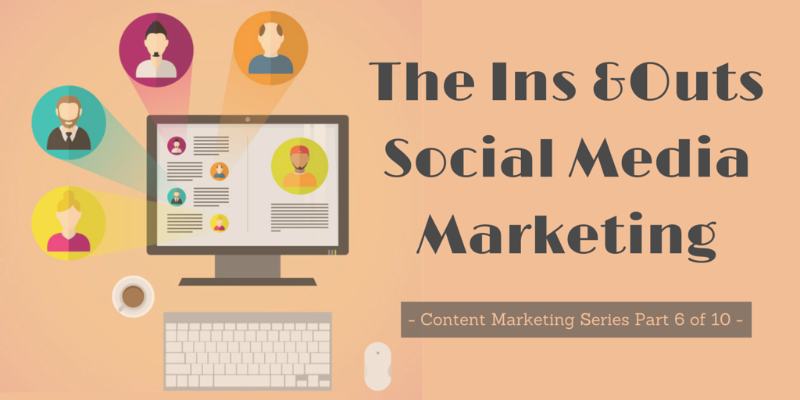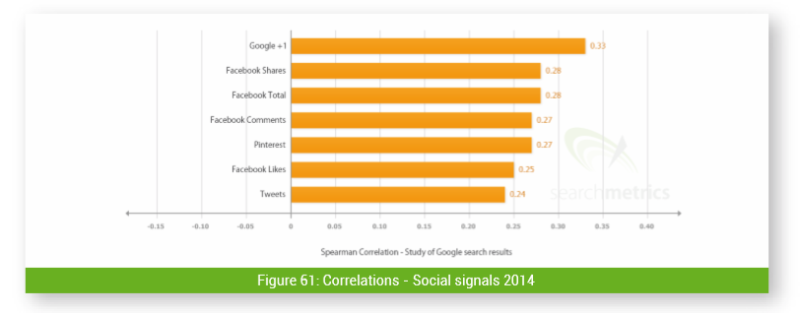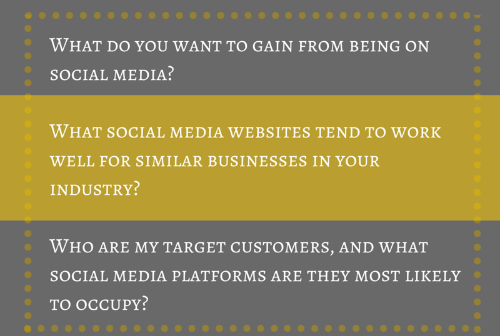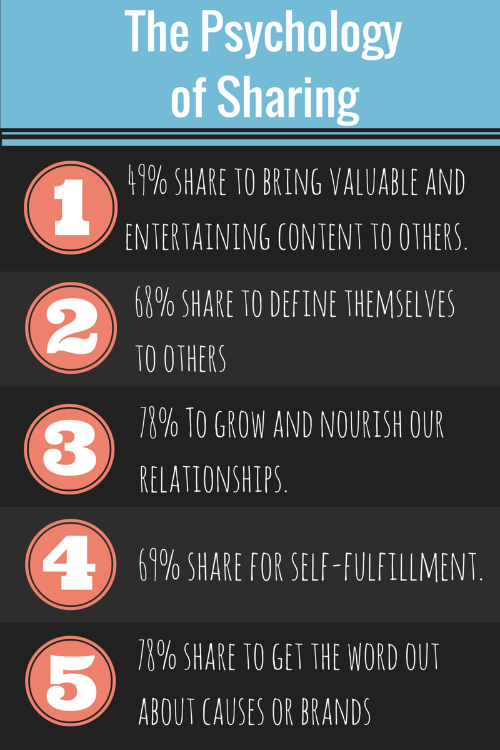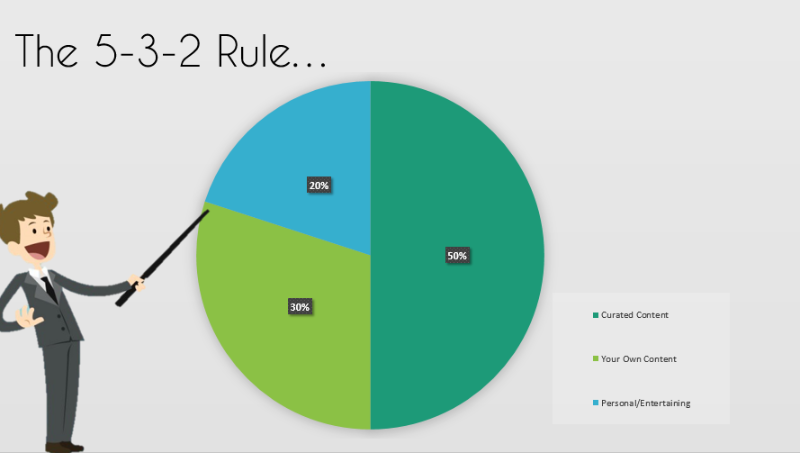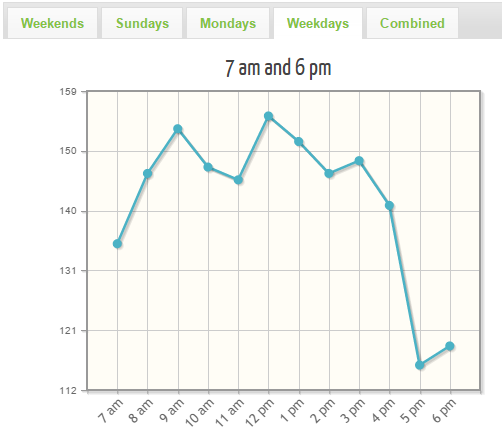In part 5, A Guide To Off-Page SEO, we discussed social signals and how they can improve your search engine marketing game. This week we’re going to dedicate some time looking at social media marketing in more detail.
What Is Social Media Marketing?
Social media marketing (SMM) is a form of internet marketing that uses social networking sites as a marketing tool. Social media marketing usually involves businesses producing content that users will engage with and share with their friends, with the aim of driving traffic to that business’ website, increasing brand exposure and extending customer reach.
How Does Social Media Work In Inbound Marketing?
Content is key to inbound marketing, but you need to make sure that people can actually find that content. Like we’ve discussed in parts 4 and 5 of this content marketing series, SEO plays a huge part in this, but so does social media. In fact, “interesting content” is one of the top three reasons people follow brands on social media.
With 2/3 people in the U.S. on at least one social media network, social media has allowed for businesses to maximize their opportunities to be found by their target audience. It’s on these networking sites that your customers are interacting with their friends, colleagues and other businesses in search of entertainment, information and recommendations, so if you’re not around to answer their call, you can bet your competitors are.
Are Search & Social Media Marketing Related?
The short and sweet answer is: Yes, search and social media marketing are related. And they’re becoming increasingly so as the internet develops.
The world is now producing a lot of content:
- The average American consumes 34 gigabytes of content and 100,000 words of information in a single day
- Every 2 Days We Create As Much Information As We Did Up To 2003
- Facebook users share nearly 2.5 million pieces of content a minute
- 500 million Tweets are sent out in a day
And as we produce more and more content, search engines need to become more intelligent and sophisticated with how they rank content so that their users get the best possible result for their queries. Because most internet users are on at least one social media site, and it’s on these sites that people show their interest in content through liking and sharing it, search engines have started to use social signals as an important metric for ranking web pages.
This reliance on social signals as a ranking factor is become stronger by the year, as is depicted by Searchmetrics 2014 correlation study:
So while social media and SEO might seem like 2 different topics, the fact is that they’re more related than ever before.
Which Social Media Platform Is Right For You?
“Social media” has become a catch-all term for sites that may provide completely different services. For example, Reddit works more like a forum than it does your typical social media site, Twitter is like “texting for the internet” and Facebook is a full-blow social networking site where you can share practically any type of content.
Because of the huge differences between the social media platforms, they’re not all equal with regards how effective they will be in reaching your business goals. This means that it’s advisable to do some research into the various social media platforms in order to get a better idea of what they’ll require from you to run successfully, and what ones are most suited to your industry.
In order to choose which social media platform will be best for your business, start by asking yourself these 3 questions:
- What do you want to gain from being on social media?
- What social media websites tend to work well for similar businesses in your industry?
- Who are my target customers, and what social media platforms are they most likely to occupy?
Once you’ve answered these questions, it’ll be a simple task of doing your research and figuring out which platforms offer the best solution.
Check out our Slideshare for a rundown of 8 of the most popular social media platforms: Facebook, Twitter, LinkedIn, Pinterest, Instagram, Foursquare/Yelp, Youtube and Google+.
Alternatively, you can check out the blog post that the Slideshare was inspired by here.
Of course there are plenty of other social media platforms out there that we haven’t mentioned, for example Reddit, Snapchat, Tumblr and Tsu. Oftentimes these alternative options can actually work better for a business than the more popular sites.
What Makes People Share Content On Social Media?
The New York Times Customer Insight Group shed some light on the psychology of sharing recently, revealing that there are 5 main reasons that people share content.
- 49% people say they share to bring valuable and entertaining content to others.
- 68% people say they share to define themselves to others.
- 78% people say they share to grow and nourish our relationships.
- 69% people say they share because it makes them feel more involved in the world (self-fulfillment).
- 84% of people share to support causes or issues that they care about.
Following this logic, we should always aim to produce content that is in line with how our customer wants to be perceived (by themselves, and by others) and content that is entertaining or informative.
What To Share On Social Media: The 5-3-2 Rule
There isn’t a clear set of rules that you have to follow when it comes to what to share on social media. Certain businesses find that sharing only their content works for them, while others say that the best practice is to only share content created by others.
But it’s not very helpful of me to tell you to just go figure it out for yourself, is it?
So as a starting point, there is a popular ratio called the 5-3-2 rule that’s often considered to be a good example of social sharing etiquette. The rule means that for every 10 pieces of content you share, 5 should be curated content from others, 3 should be your own content and 2 should be entertaining/personal content.
Remember, this is just a template and not a foolproof rule. You’ll have to play around with it, test it and see what ratios work best for you.
50% Curated Content
Curated content is content that you find from another source in your industry.
Why share content from others?
Imagine you’re at a dinner party and you’re making polite conversation. What do you talk about? Just yourself?
No, of course you don’t! That’s rude, and it’s boring to the other person. Instead, you try to hit on topics that you’re both interested in and have a conversation about a variety of different subjects. That’s called being a good conversationalist.
Social media is a type of conversation, so it only makes sense that the same logic would apply. People get very tired of a business that keeps promoting themselves and doing nothing else.
Where to find amazing content?
- Newsletters
- Social Media
- Scoopit/StumbleUpon
- Feedly
- Medium
- Monthly Roundups (some blogs compile lists of the best content from the month/week before that can give you some amazing things to share)
- Communities/Forums (Google+ have some amazing communities that regularly share really great content)
When you first start curating content, you might find that it’s taking up quite a bit of your time (or, at least, that’s what I found). I’ve gotten a few strategies together to make content curation much easier that you can check out in this blog post: How to Speed Up Your Content Curation Process Without Sacrificing Quality
30% Your Own Content
When sharing your own content, you want to ensure that you’re not being too pushy or salesy. Your content should really sell itself.
Try to personalize your social sharing to seem more human.
20% Other Content
And finally, 20% of your content should be personal/entertaining. It’s an often overlooked aspect of social media for businesses, but it’s crucial in humanizing your brand.
For this kind of content, you can share something that you’ve found online, or you can create something new.
- Ecards are really popular because they’re funny, and when the message hits a nerve, people tend to share them easily.
- People love to share memes. MemeGenerator is a great tool for creating your own industry-specific memes that you think will entertain your audience.
- Inspirational quotes are also quite popular, often accompanied with an image of sorts. LiveLuvCreate have background images that you can easily add text to and share with your followers.
Remember, this is all a template. Spokal doesn’t necessarily follow this rule all the time, but we’ve tried something similar and changed it up to suit what our audience likes best.
When To Share On Social Media
Now that you have a good feeling for what type of content to share on social media, what’s the best day and time to share to each social network?
Tweriod and Followerwonk take all the guess work out of your social sharing. These amazing tools analyze your social media accounts to tell you what the optimal time that you should be sharing your content on social media is.
Here’s an example of Spokal’s graph for our engagement. As you can see, we get most of our traffic between 7am and 6pm, with spikes at 9am and 12pm.
How Often To Share On Social Media
How much you choose to share on social media varies from business to business, but there has been several studies done that have helped create some general guiding principles.
Social media management tools
Feeling overwhelmed? Don’t know how you’re going to be active on social media without spending hours every day tending to it?
Not a problem.
There are plenty of tools out there that help businesses manage their social media marketing, without having to sacrifice the quality of their engagement.
Spokal, for example, allows for you to create a social sharing schedule in batches so you only have to check in at certain points during the day. Buffer and Hootsuite are other tools that also manage your social sharing without any of the other inbound marketing features that Spokal has.
There are also social media platform-specific solutions, such as Post Planner for Facebook and BundlePost for Twitter.
Remember, social media automation is a tool that can help you manage your social media marketing, but don’t abuse it. The “set it and forget it” attitude has backfired on more than one business in the past, so check out A Guide To Creating A Social Media Automation Strategy That Works to get a sense of how to use social media automation.
Conclusion
Social media marketing is an important part of inbound marketing, and it’s increasingly becoming a central part of many business owners marketing strategies. However, there are no rules to social media, only guides so be careful not to rely too heavily on these guides and instead test different things out on your social media platforms.
Next week, we’re going to be discussing paid (or rented) advertising.
Liked this post?
 Stay up to date with what else we're posting! (Plus we'll send you lots of extra goodies)
Stay up to date with what else we're posting! (Plus we'll send you lots of extra goodies)
Spokal’s 10 Part Content Marketing Series
- Introduction to Spokal’s 3 Pillars of Inbound Marketing (Content Marketing Series Part 1 of 10)
- Content Marketing: The Lifeline of Your Online Business (Content Marketing Series Part 2 of 10)
- The 8 Key Factors in Creating Great Content (Content Marketing Series Part 3 of 10)
- Website Usability and On-Page SEO (Content Marketing Series Part 4 of 10)
- A Guide To Off-Page SEO (Content Marketing Series Part 5 of 10)
- The Ins & Outs Of Social Media Marketing (Content Marketing Series Part 6 of 10)
- A Beginner’s Guide To Paid Online Advertising (Content Marketing Series Part 7 of 10)
- How to Get them from Browsing to Buying: Lead Nurturing (Content Marketing Part 8 of 10)
- The Art of Creating Compelling CTAs (Content Marketing Series Part 9 of 10)
- The Beginner’s Guide To Email Marketing (Content Marketing Series Part 10 of 10)
